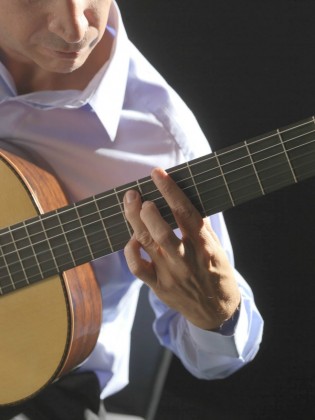How to get good timbre when playing classical guitar, or any guitar!
Any guitarist that is proficient will always be looking how to improve their timbre. But what is timbre? Timbre is the ‘sound’ of what you are playing and how suddenly or smoothly you transition between the individual sounds. The timbre of what you are playing can be changed on any guitar, be it acoustic, classical or electric.
The timbre is how you can play around with a sound and change a Heavy metal song into a 1920s style swinging big band arrangement simply by turning off the distortion of your electric guitar and playing in a jaunty fashion. You can change the timbre to make the notes sound more like brass, or more like a piano. It’s all about interpretation and different playing techniques.
An easy way to think of timbre is this: I play a C note on a guitar with nylon strings and then the same C note on a guitar with steel strings; the note is the same, but the sound is different. If I play a C on a piano and then a C on a trumpet; the note is the same, but the sound is different; that’s timbre.
To have good timbre you must be able to play the notes as clearly as possible. Many experts agree that the best place to start is by focusing on your fingering and make sure that you are using the tips of your fingers to manipulate the strings; this is especially crucial if you are playing classical Spanish guitar. An impeccable sounding note is only achieved when all other noise from the guitar and strings is eliminated.
A common source of unwanted noise is the resonance and vibrations the guitar produces when playing bass notes. To counter this, you can hit the higher notes a bit harder to try and cancel out the vibration of a bass note you previously played.
Apart from technique, the condition of your guitar, the cleanliness of your hands and the quality of your amplifier all affect the timbre of what you are playing. Make sure you clean your strings and take care of your equipment.



